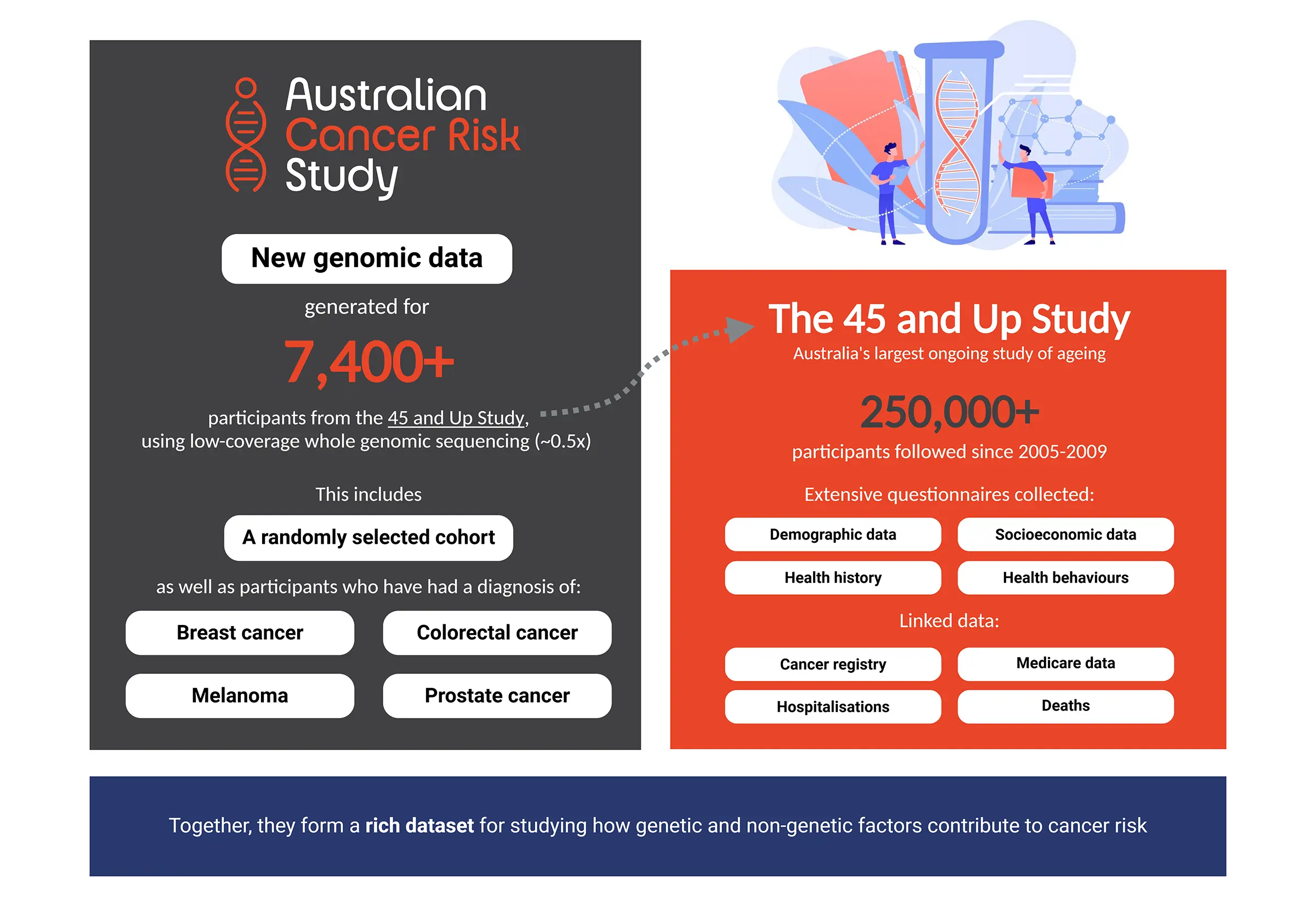As part of the Australian Cancer Risk Study, we have created a powerful new resource of Australian genomics data. Specifically, we generated new genomic data within the 45 and Up Study, a large cohort study in Australia that has already collected extensive information on participants. We invited over 30,000 participants to provide a DNA sample, so their genomic information could be combined with detailed health records and help find better ways to predict cancer. The invitations were sent to a randomly selected subset of all participants, as well as anyone who had a diagnosis record of prostate, breast, melanoma, or colorectal cancers. We are highly grateful to the almost 8,000 participants who agreed to take part and provided a saliva sample.
Thanks to a wonderful collaboration across institutions (including the Daffodil Centre, the Sax Institute, QIMR Berghofer, and the Centre for Population Genomics), we have now successfully completed generation of the genomic data, with the final dataset including over 7,400 participants.

The genomic data were generated using so-called low-coverage whole-genome sequencing and genotype imputation, which provides information on millions of genetic markers across the genome. These rich data will be integrated into the 45 and Up Study as a long-last resource. The data as well as residual DNA samples collected through this Study will become available to other researchers for approved health and medical research projects (via applications through the Sax Institute), to help accelerate genomics research in Australia and ultimately improve Australians’ health.
The generation of genomic data within the Australian Cancer Risk Study is led by A/Prof. Julia Steinberg, working closely with Dr Martin McNamara and his team at the Sax Institute (recruitment of participants), and Prof. Nick Martin and his team at QIMR Berghofer (saliva sample collection and DNA extraction), and with valuable advice provided by Prof. Daniel MacArthur and his team at the Centre for Population Genomics.